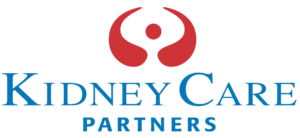Kidney Care Partners’ Quality Initiative Spurs 25% Improvement In Mortality Rates for Dialysis Patients Within the First 90 Days Of Treatment, 13.6% Improvement In First Year
September 19, 2013
Washington, DC – Kidney Care Partners’ PEAK (Performance Excellence and Accountability in Kidney Care) quality improvement initiative spurred a 25 percent reduction in mortality rates for dialysis patients in the first 90 days of treatment and a nearly 14 percent reduction during the first year, according to an analysis of data prepared by Brown University*.
Launched in 2009, the PEAK Campaign was a voluntary community initiative designed to highlight proven practices with the goal of improving the rate of survival of kidney failure patients new to dialysis. Available data at the time indicated that overall survival rates for patients with end-stage renal disease (ESRD) had been improving, but, by comparison, the first-year mortality rate had remained relatively stagnant.
As part of the Campaign, KCP worked with Quality Partners of Rhode Island (now Heathcentric Advisors) to convene a series of expert panels to focus on clinical as well as patient and family engagement “best practices” that, if implemented consistently, could help improve survival rates. Areas of focus included reducing catheter use in favor of arteriovenous fistulas, improving cardiovascular outcomes, managing nutrition and inflammation, handling anemia, and optimizing dialysis, along with screening for depression, educating patients, and providing social support.
To monitor the kidney care community’s efforts to improve first-year survival rates, KCP partnered with researchers at Brown University who analyzed government data sets that include information on patient deaths. Researchers from within the kidney care community worked with Brown researchers on a technical advisory panel to help interpret the data.
The final report was prepared by Drs. Vincent Mor and Shailender Swaminathan from Brown University.
“The reduction in first-year mortality represents a significant quality achievement,” said Dr. Mor, the Florence Pirce Grant Professor of Community Health in the Public Health Program of the Brown University School of Medicine. “A reduction of 13.6 percent in first-year mortality and 25 percent in 90-day mortality is quite substantial. It’s impressive that the kidney community launched this initiative voluntarily and independently. They didn’t depend on government to do it for them.”
Chairman of Kidney Care Partners Ron Kuerbitz said, “We are proud of these results, especially given the distinct challenges of caring for individuals with such complex medical needs. We look forward to building upon this progress to help Americans with kidney failure live longer, healthier, and more productive lives.”
Each year, more than 100,000 Americans are diagnosed with kidney failure, a number that continues to rise with the aging population and the increasing prevalence of risk factors, including diabetes and high blood pressure. Today, more than 31 million Americans are living with chronic kidney disease (CKD), which, if left untreated, can ultimately progress to kidney failure. About 415,000 patients aren’t fortunate enough to receive a kidney transplant and rely on life-sustaining dialysis care, generally three times per week for three to four hours per treatment, to filter toxins from their blood.
Because of the unique and incurable nature of this disease, and the necessity of care to survive, the Medicare ESRD benefit was implemented in 1972 and covers the cost of dialysis for all Americans who need it, regardless of age or income. Approximately 85 percent of the patients on dialysis rely on Medicare’s dialysis benefit for their care.
“We look forward to sharing our PEAK program results with policymakers and health officials, given that caring for this population is truly a public/private partnership,” added Kuerbitz. “We have a real opportunity to continue the trajectory of quality improvements, and it is crucial to continue working together.”
*The analysis uses a methodology that closely mirrors that by the United States Renal Data System to calculate the mortality rates based on “per person years.” Using an alternative methodology sometimes presented in the literature of “percent of patients dying,” the PEAK results show a 13.7% reduction in first-year mortality and a 22.5% reduction in 90-day mortality.
